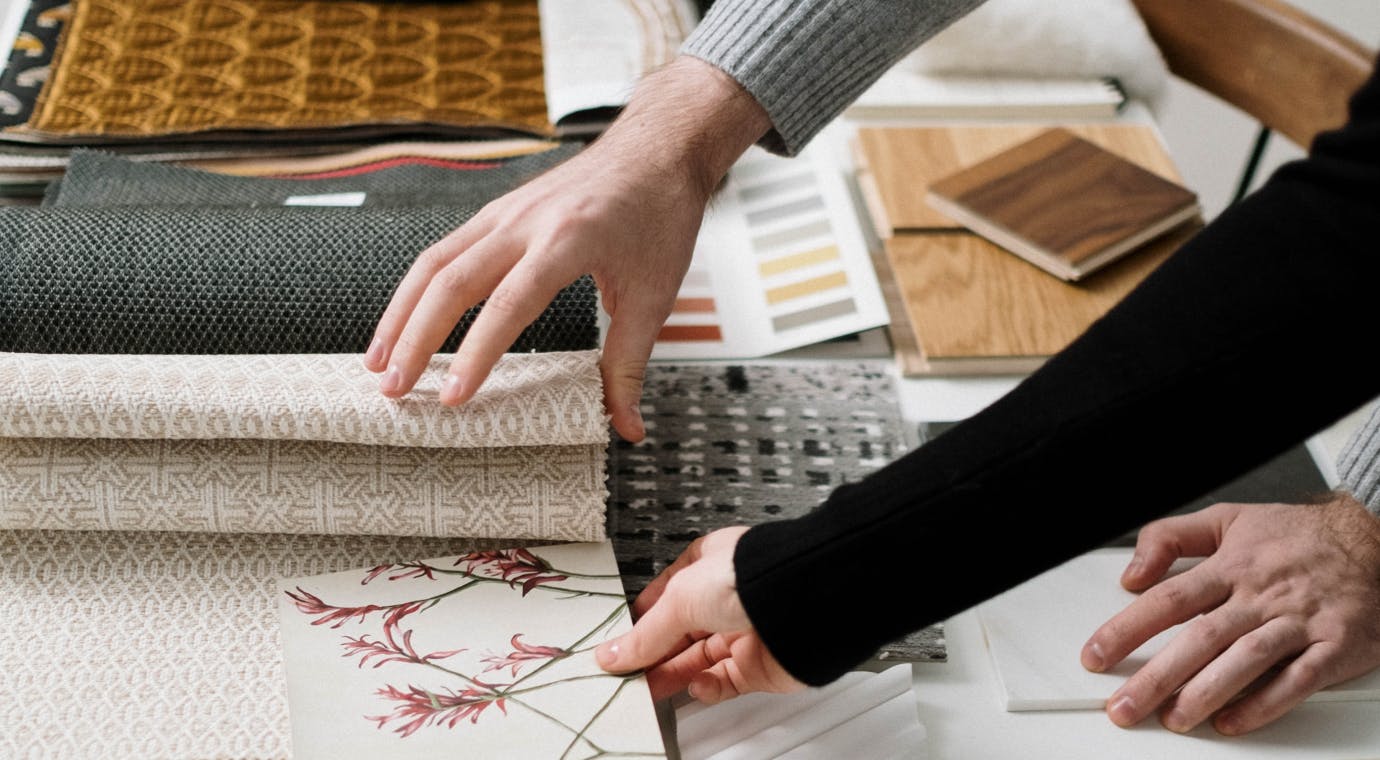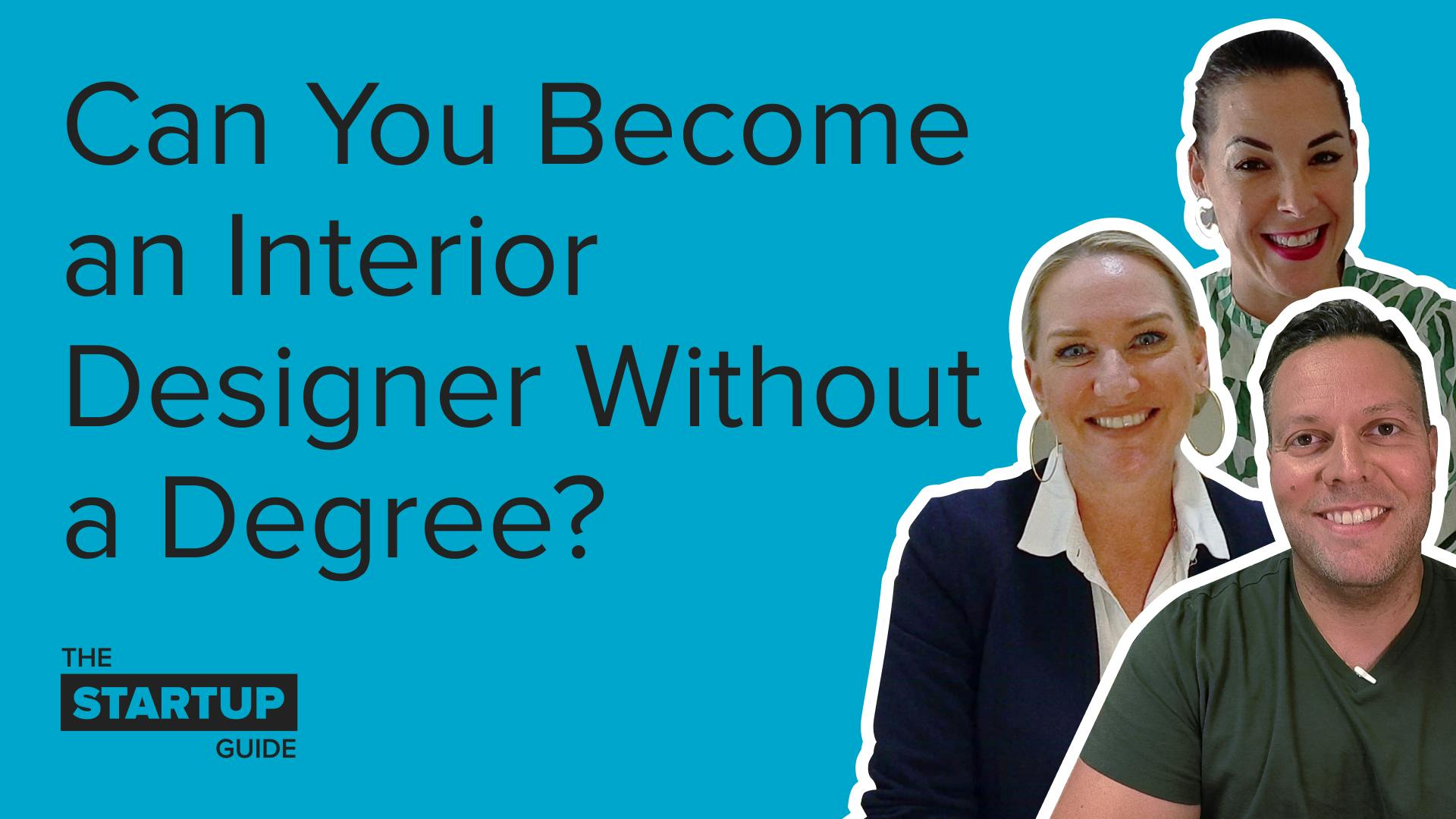Video: Can You Become An Interior Designer Without A Degree?
Learn whether you can become an interior designer without a degree, then find tips on how to get the skills to become a designer or start a design business.

While you can become an interior designer without a degree or certification, having some form of higher education can be beneficial to getting hired by firms and standing out with potential clients. Still, it’s very possible to become an interior designer without degree completion — and more than a quarter of interior designers surveyed by Houzz in 2022 report having a high school diploma to an associate degree.
In this article, we’ll cover ways to work as an interior designer without a degree, as well as share opinions from real pros about formal education in interior design and helpful resources to learn more. Start by checking out the video below to hear designers discuss the importance of a degree.
What do real interior designers think about the importance of an interior design degree?
Each professional has their own opinion about whether or not it’s important to have a degree in interior design, so we’ve shared some thoughts from real pros to help you make the decision that’s best for you.
“I think that at least having some education is important,” says Jolene Irons, Interior Designer at Cedar & Fig in Renton, WA. “I don’t think that I would have been able to do what I do now if I hadn’t taken the color consultation classes and all of that. I didn’t even know what I didn’t know until I took those.”
Jolene goes on to say that there’s a lot you can learn on the job as an interior designer, but other areas may require a bit more education. “I’ve never had a client ask exactly what my credentials were, but if I can speak the language then clients can see that I know what I’m talking about.”
While Kirby Foster Hurd of Interior Designer at Kirby Home Design in Oklahoma City, OK also supports higher learning, Kirby shares that having a business education (not necessarily an interior design degree) is very helpful. “I was doing negotiations and all of those business things in my regular job, so it translated really well when I got into interior design. I’d recommend future designers either get a certificate in business or a minor in business — that has just helped me tremendously.”
Lastly, Ekaterina Groznaya of Interior Designer at Studio E Designs in Magnolia, TX felt prepared to be an interior designer without a degree, though valued a more formal education. “I could have done it without a degree, but I wanted to learn as much as I could about it to be good at it. I don't want to meet a client and not know what I'm doing. I want quality.”
No matter the choice — pursuing an interior design degree or other forms of learning — having the right skills, experience and knowledge are key to a successful career as an interior designer.

How to be an interior designer without degree completion
You can become an interior designer without completing a degree or certification by taking these steps:
1. Learn what the job is about
As a simple definition, interior design applies to the design and decoration of interior spaces within a home, office, retail business or other type of building utilizing both aesthetic and structural design principles. But interior design also involves much more than designing. Other tasks and duties include meeting with clients, project management, sourcing and obtaining furnishings and design materials, working with contractors, traveling to the job site or to meet with stakeholders, installing the final design and more. Learn more about what interior designers do in our next guide.
2. Learn what skills you need
Interior design requires a unique set of skills. Here are just a few:
- Creativity
- Visual design, drawing and computer skills
- Knowledge about design styles and trends
- Organizational and project management skills
- Effective problem-solving and collaboration
- Communication and client service skills
Consider joining an interior design community to learn more about the industry and the skills you need to become an interior designer. Or keep reading our next guide to take a deeper dive into the roles, responsibilities and required skills of interior designers.
3. Gain experience
Whether paid, DIY or volunteer, there are lots of ways to learn how to do interior design without a degree and build a killer portfolio at the same time.
- Design your own projects at home — from bedroom and living room redesigns, kitchen and bath — the possibilities to start designing are right in your “backyard.”
- Ask your friends and family if you can take on any of their home design projects to start gaining experience.
- Volunteer or contract your services to design spaces in need in your community, such as community centers, libraries, nursing homes, preschools, places of worship, etc.
- Work as an intern or apprentice for a local designer, learning the trade and possibly receiving a small wage or stipend.
4. Start networking
Buy yourself some business cards and start introducing yourself to people you meet as an interior designer. Share them with your friends and family, and encourage them to help you spread the word by sharing with people they know. Network with other local designers, contractors, builders and business professionals in your area — they may have a need for your services, could recommend you for a project or collaborate with you. And of course, online networking is great, too: explore Facebook groups, online forums, interior design communities and more.

How to start an interior design business without a degree
So, are you wondering how to do interior design without a degree and start your own business? Here are five steps:
1. Choose the services you’re going to provide
Interior design offers so many service and specialty options, so it’s important to narrow down the services you feel most skilled at and that will be markable for your business. The possibilities go far beyond this list, but this will help get you started:
- Full-service design (from design to purchasing to installation)
- Design only (no obtaining furnishings, materials or installing)
- In-home consultations
- Virtual design
- Types of design: residential, commercial, retail, event, exhibition, lighting, set design and more
- Color consultations (as a standalone service)
- Specialities such as eco-friendly design, feng shui, restoration, hospital or classroom design and many others
- Specific/niche rooms: kitchen, bath, children’s rooms, meeting rooms, hotel lobbies, etc.
2. Create your mission and the focus of your business
After you’ve determined your services and specialities, it’s vital to hone in your mission statement and the focus of your interior design business. What will set you apart? What makes your business distinct from others? Who are the types of clients you want to work with? How can you uniquely delight these clients with your services and specialities offered? Start brainstorming and also check out How to Write a Business Plan for Interior Design for more great tips.
3. Price your services
It’s important to price your services for profitability and competitiveness in your local area, so make sure to do some analysis and number crunching before deciding your prices. Here are just a few pricing models to consider:
- Charging by the hour
- Charging a flat rate per project
- Charging by the size of the space
- Charging retail pricing vs. cost plus pricing
For more advice, take a plunge into How to Charge for Interior Design Services.
4. Obtain, practice and develop interior design skills & knowledge
You’ve got to have the skills (and know-how) to pay the bills. Here’s what to do:
- Take classes online, at local community college or art school; sign up for interior design seminars or workshops.
- Develop your interior design practice and build a portfolio of work by selling your services to family and friends, taking on contracting work and marketing your services within your community.
- Stay up-to-date on your field and with trends by frequenting design websites and blogs, listening to podcasts, subscribing to popular email newsletters, reading magazines and trade publications, following influential social media accounts and attending trade shows.
5. Market your business
Create your marketing plan, budget and start exploring all the possible ways to market your business:
- Email marketing
- Online advertising
- Social media
- Video marketing
- Blogging
- Print mailers
- Trade shows
- Networking
- And much more
Get the inside scoop on how to find new clients to work with in our guide, 20+ Ways to Get Interior Design Clients in 2022.
Conclusion
The choice is yours as to which path is best now that you know you can become an interior designer without a degree. If you’re a beginning designer and the non-degree route is one you’re considering, check out How To Get Started as an Interior Designer with No Experience to learn more.

Want advice delivered to your inbox?
Unlock industry insights and updates for contractors and design pros
By signing up, I agree to the Houzz Terms of Use and Privacy Policy and that Houzz may use my information to contact me about relevant content, products, and services.












Join the conversation by commenting or asking a question below. The Houzz team reads every single comment, and we’ll get back to you by email if you need us!